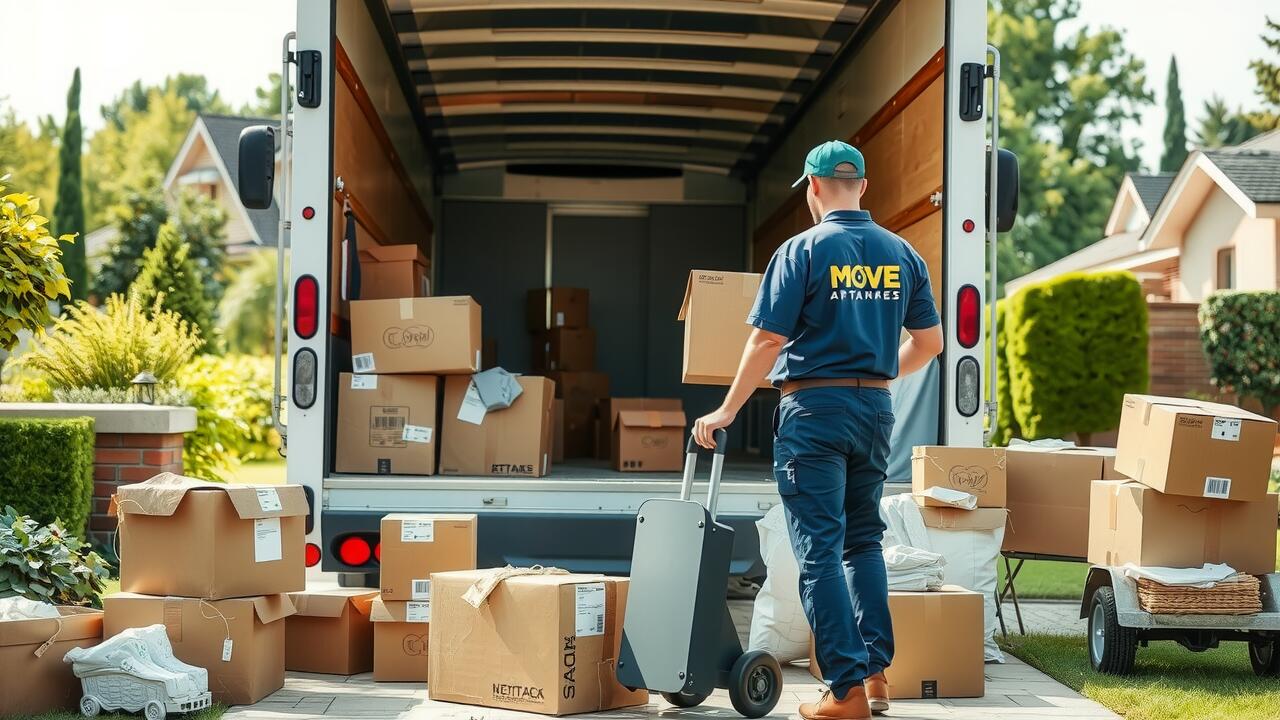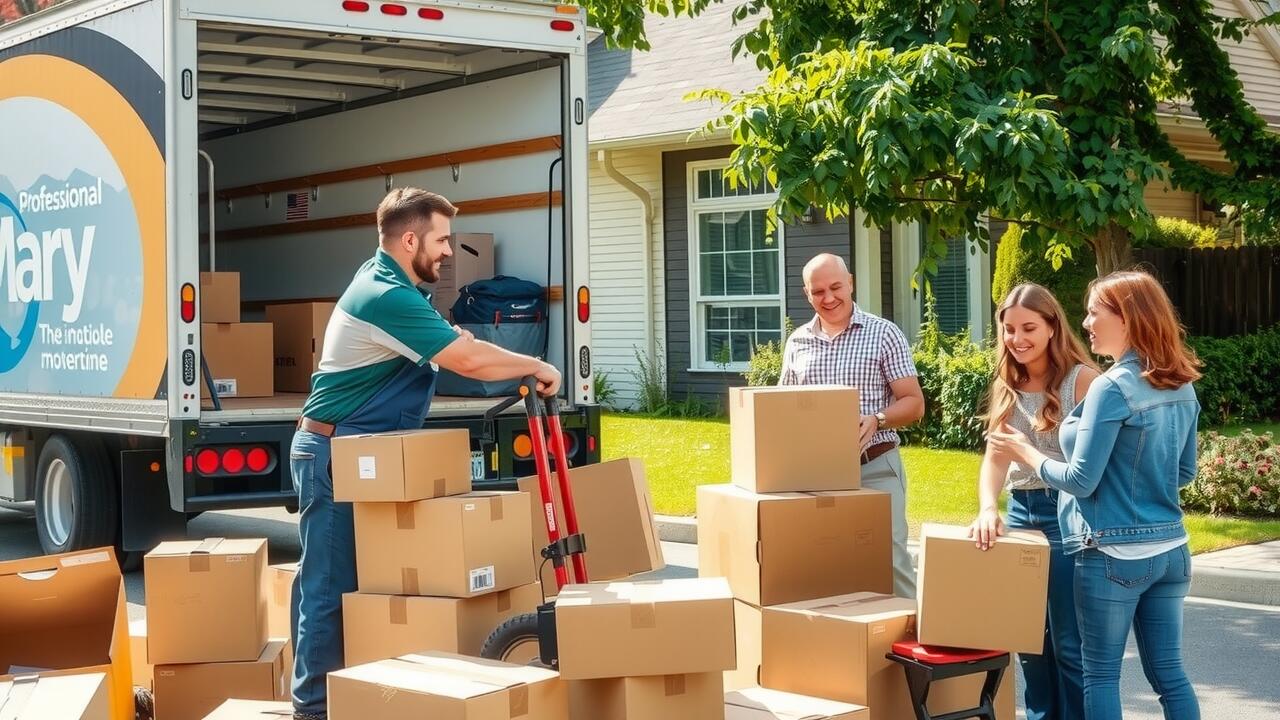
Table Of Contents
Packing Techniques for Efficiency
Efficient packing is crucial for any move, whether it's local or long distance. Start by gathering your packing materials, including sturdy boxes, packing tape, labels, and bubble wrap. Categorize your belongings by room or type, making it easier to unpack at your new location. For fragile items, use bubble wrap or packing paper for extra cushioning. Fill in gaps in boxes with soft items like clothing or towels to prevent shifting during transport. Properly labeling each box can save time when it comes to unpacking.
When preparing for Local and Long Distance Moving in South Hill, Washington, consider using a room-by-room approach. This method keeps related items together, reducing clutter as you pack. Disassemble large furniture pieces to save space and prevent damage, storing screws and small parts in labeled bags taped to the furniture. Lastly, make an essentials box for items you'll need immediately after the move, such as toiletries, basic kitchenware, and important documents. Being strategic about packing can significantly enhance your moving experience.
Best Practices for Protecting Your Belongings
Properly safeguarding your belongings during a move is crucial to ensure they arrive at your new destination unharmed. When packing, always use high-quality packing materials, including sturdy boxes, bubble wrap, and packing paper. Begin by wrapping fragile items individually and filling any empty spaces in boxes with cushioning materials to prevent movement. For heavy items, consider using boxes specifically designed to hold their weight. Label each box clearly with its contents and the room it belongs to, which will streamline unpacking later.
Local and Long Distance Moving in South Hill, Washington, often requires additional considerations due to varying distances and travel conditions. It is wise to create an inventory list of all your possessions before starting the packing process. This not only helps in tracking items but also serves as a checklist for insurance purposes. If you have valuable or sentimental items, transport these items personally whenever possible. Taking extra precautions during your move will minimize the risk of damage and ensure a smoother transition into your new home.
Organizing Moving Day Logistics
Efficient logistics planning is essential for a successful moving day. Begin by creating a comprehensive checklist that outlines tasks, including loading times, transporting belongings, and unloading at the new location. Ensure that you allow ample time for unforeseen delays and confirm arrangements with any movers or helpers well ahead of the moving date. If you are managing Local and Long Distance Moving in South Hill, Washington, consider the unique aspects of your journey, such as traffic patterns and road conditions, to optimize your schedule.
Communication plays a crucial role on moving day. Designate a point of contact among your moving crew to streamline decisions and address any issues that may arise. Provide clear directions to your new home and make sure everyone involved knows their responsibilities. Having designated packing zones can minimize confusion during the loading process. Remember to keep important documents and essentials accessible throughout the day. This organized approach will help make the transition smoother, whether you are relocating locally or undertaking long distance moving in South Hill, Washington.
Coordinating with Movers and Helpers
When coordinating with movers and helpers, clear communication is essential. Provide detailed information about your moving schedule and any specific requirements for your Local and Long Distance Moving in South Hill, Washington. Share the layout of both your current and new homes. This helps movers understand how to manage heavy or bulky items and plan their route for optimal efficiency.
It’s also important to confirm the number of helpers you will have on moving day. If you are using a moving company, ensure they have the right number of staff available. Discuss any potential challenges such as narrow doorways or stairs. Establishing a point of contact on moving day can help keep everyone on the same page and address any issues that arise quickly.
Settling into Your New Home
Unpacking can feel overwhelming after a move, but breaking it down into manageable tasks can ease the process. Start with essentials. Unpack items that you use daily first, such as toiletries, kitchenware, and clothing. This strategy helps create a functional space while allowing you to tackle the larger boxes at your own pace. Prioritize rooms based on immediate needs, such as the kitchen and bedrooms, to streamline your experience. Focus on creating a space that feels familiar and comfortable.
Local and Long Distance Moving in South Hill, Washington, requires more than just physical relocation. Take time to familiarize yourself with the neighborhood. Explore local amenities, parks, and grocery stores to help establish a sense of community. Meeting neighbors can also ease the transition, providing support and helpful information about the area. Building connections in your new environment will make you feel more at home, aiding your adaptation to the changes brought on by the move.
Strategies for a Smooth Transition
Adjusting to a new environment can be challenging, especially after Local and Long Distance Moving in South Hill, Washington. Create a checklist of essential tasks to complete as you settle in. Start by unpacking key items like bedding, kitchen essentials, and toiletries. This approach ensures you have access to necessities without feeling overwhelmed by boxes. Establishing a comfortable and functional living space will also aid in easing the transition.
Familiarizing yourself with the neighborhood can enhance your overall settling-in experience. Explore parks, shops, and local dining options to make the new area feel more like home. Connecting with neighbors can also provide valuable insights and a sense of community. Attend local events or join clubs to meet new people and integrate into the community. Building relationships can significantly improve your settling-in process and contribute to a smoother transition.
FAQS
What are some efficient packing techniques for moving?
Efficient packing techniques include using sturdy boxes, labeling each box by room and content, utilizing space efficiently by filling gaps with smaller items, and packing heavy items in smaller boxes to make them easier to carry.
How can I best protect my belongings during a move?
To protect your belongings, use bubble wrap or packing paper for fragile items, secure furniture with moving blankets, disassemble large furniture when possible, and ensure boxes are properly sealed with packing tape.
What should I consider when organizing moving day logistics?
Consider creating a detailed schedule, confirming the arrival time of movers, ensuring access to your current and new home is clear, and preparing a moving day essentials kit that includes snacks, water, and necessary documents.
How do I coordinate effectively with movers and helpers?
Communicate clearly with your movers or helpers about your expectations, provide them with a layout of your new home, and make sure to answer any questions they may have about large items or special packing needs.
What strategies can help ensure a smooth transition into my new home?
To ensure a smooth transition, unpack essentials first, establish a designated space for everything, set up utilities and services in advance, and explore your new neighborhood to familiarize yourself with local amenities.
